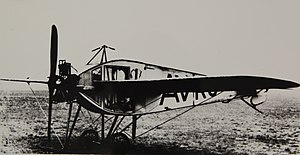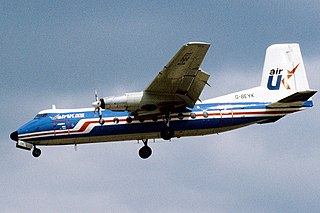
The Handley Page Dart Herald is a 1950s British turboprop passenger aircraft.

The Avro Andover was a 1920s British military transport aircraft built by Avro for the Royal Air Force. Four aircraft were built, in two versions. Three aircraft, the Type 561, were used as flying ambulances. The sole example of the Type 563 was used as a 12-seater transport.

The Avro 549 Aldershot was a British single-engined heavy bomber aircraft built by Avro.

The Avro 555 Bison was a British single-engined fleet spotter/reconnaissance aircraft built by Avro.

The Blackburn R-1 Blackburn was a 1920s British single-engine fleet spotter/reconnaissance aircraft built by Blackburn Aircraft.

The Avro Club Cadet was a 1930s single-engined British biplane trainer aircraft, designed and built by Avro as a development of the earlier Cadet. It was planned for private and club use and, unlike the Cadet, was fitted with folding wings.

The Roe IV Triplane was an early British aircraft designed by Alliott Verdon Roe and built by A.V. Roe and Company. It was first flown in September 1910.

The Avro Type D was an aircraft built in 1911 by the pioneer British aircraft designer A.V. Roe. Roe had previously built and flown several aircraft at Brooklands, most being tractor layout triplanes. The Type D was his first biplane.

The Avro Type E, Type 500, and Type 502 made up a family of early British military aircraft, regarded by Alliott Verdon Roe as his firm's first truly successful design. It was a forerunner of the Avro 504, one of the outstanding aircraft of the First World War.

The Avro Type G was a two-seat biplane designed by A.V. Roe to participate in the 1912 British Military Aeroplane Competition. It is notable in having a fully enclosed crew compartment, and was also the first aircraft to have recovered from a spin in front of witnesses.
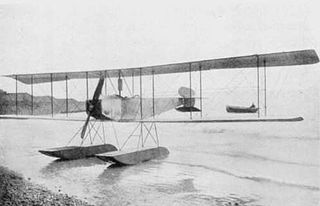
The Avro Type H, Type 501, and Type 503 were a family of early British military seaplanes. They were a development of the Avro 500 design and were originally conceived of as amphibious, the prototype being fitted with a single large main float under the fuselage, and two outrigger floats under the wings.

The Avro 523 Pike was a British multi-role combat aircraft of the First World War that did not progress past the prototype stage. It was intended to provide the Royal Naval Air Service with an anti-Zeppelin fighter that was also capable of long-range reconnaissance and bombing.

The Avro 534 Baby was a British single-seat light sporting biplane built shortly after the First World War.

The Avro 547 was a prototype triplane airliner developed in Britain after the First World War. It utilised components from the highly successful 504 but added an extra set of wings and a new deep fuselage housing a fully enclosed cabin to seat four passengers. The aircraft was powered by a 160 hp (120 kW) Beardmore engine. The pilot sat in an open cockpit offset to port. The prototype flew well, having similar characteristics to a 504, the second example built was substantially modified, in order to compete in a British Air Ministry competition for a commercial aircraft, being fitted with a 240 hp (180 kW) Siddeley Puma engine. Designated 547A, this version turned out to be slow and unstable in the air and failed to win an award in the competition in August 1920. Damaged in a forced landing at the competition, the second prototype was scrapped in 1922.

The Avro 548 was a civil trainer aircraft built in Britain after World War I. Its design was based extensively on Avro's 504 military aircraft, but it had an inline engine and a third seat. The prototype, designated 545, first flew with a Curtiss OX-5 V-8 engine, but this proved impractical for the civil market on account of the engine's weight and the complexity of its cooling system. An air-cooled Renault engine was used instead, and the designation 548 applied to this configuration. In practice, these aircraft were usually customised for their buyers and most differed from each other in equipment and detail; some were retrofitted war-surplus 504s. Many were used as civil trainers, others for joyriding, personal transport and racing.
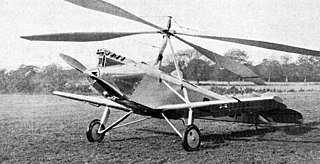
The Cierva C.17 was a British experimental autogyro built by Cierva Autogiro Company in England in 1928, in association with Avro. It was an attempt to build upon the successful Cierva C.8 design using the smaller, more streamlined fuselage of an Avro Avian IIIA as a starting point. The type was found to be underpowered, and when the first attempt at fitting a more powerful engine still did not result in acceptable performance, the design was abandoned.

The SECAN SUC-10 Courlis was a French high-wing touring monoplane designed and built by Société d'Etudes et de Construction Aéronavales (SECAN), a branch of the automobile company Société des Usines Chaussons. The aircraft had problems with the engine installation and only 144 were built, some without engines and were scrapped.
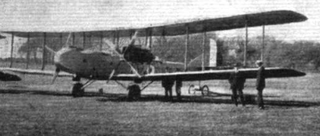
The Avro 529 was a twin-engined biplane long-range bomber of the First World War. Two prototypes were built but no production ensued.

The Bristol Babe was a British-built light single-seat biplane, intended for the private flyer and produced immediately after the First World War. Only two flew.

The Caudron Types M and N were small, fast French sports monoplanes, flown 1911–13 under a wide range of engine powers. There was also a military version.
